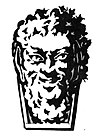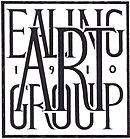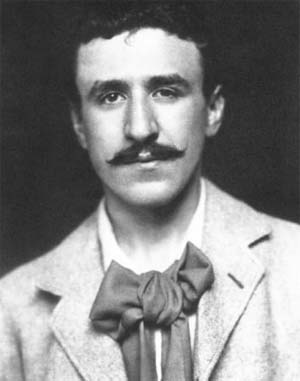
Charles Rennie Mackintosh was a Scottish architect, designer, water colourist and artist. His artistic approach had much in common with European Symbolism. His work, alongside that of his wife Margaret Macdonald, was influential on European design movements such as Art Nouveau and Secessionism and praised by great modernists such as Josef Hoffmann. Mackintosh was born in Glasgow and died in London. He is among the most important figures of Modern Style.
Robert Lawson was an American writer and illustrator of children's books. He won the Caldecott Medal for his illustrations in They Were Strong and Good in 1941 and the Newbery award for his short story for Rabbit Hill in 1945.
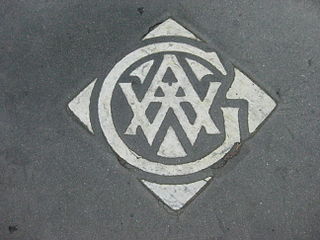
The Art Workers' Guild is an organisation established in 1884 by a group of British painters, sculptors, architects, and designers associated with the ideas of William Morris and the Arts and Crafts movement. The guild promoted the 'unity of all the arts', denying the distinction between fine and applied art. It opposed the professionalisation of architecture – which was promoted by the Royal Institute of British Architects at this time – in the belief that this would inhibit design. In his 1998 book, Introduction to Victorian Style, University of Brighton's David Crowley stated the guild was "the conscientious core of the Arts and Crafts Movement".

Arthur Heygate Mackmurdo was a progressive English architect and designer, who influenced the Arts and Crafts Movement, notably through the Century Guild of Artists, which he set up in partnership with Herbert Horne in 1882. He was the pioneer of the Modern Style and in turn global Art Nouveau movement.

The Modern Style is a style of architecture, art, and design that first emerged in the United Kingdom in the mid-1880s. It is the first Art Nouveau style worldwide, and it represents the evolution of the Arts and Crafts movement which was native to Great Britain. Britain not only provided the base and intellectual background for the Art Nouveau movement, which was adapted by other countries to give birth to local variants; they also played an over-sized role in its dissemination and cultivation through the Liberty department store and The Studio magazine. The most important person in the field of design in general and architecture in particular, was Charles Rennie Mackintosh. He created one of the key motifs of the movement, now known as the 'Mackintosh rose' or 'Glasgow rose'. The Glasgow School was also of tremendous importance, particularly due to a group closely associated with Mackintosh, known as 'The Four'. The Liberty store nurturing of style gave birth to two metalware lines, Cymric and Tudric.
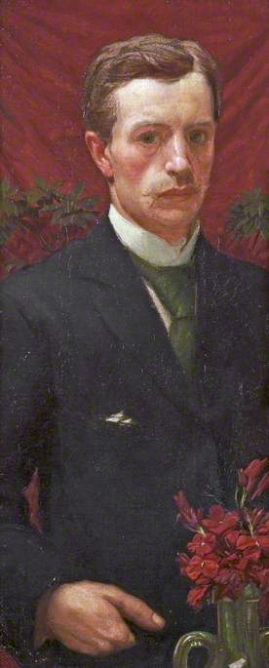
Henry Albert Payne RWS, also known as "Henry Arthur Payne", was a British stained glass artist, watercolourist and painter of frescoes.

Arthur Joseph Gaskin RBSA was an English illustrator, painter, teacher and designer of jewellery and enamelwork.
George Washington Henry Jack was a British Arts and Crafts designer and architect. Born in America, he grew up and trained in Scotland, before moving south to join the office of Philip Webb. A contemporary of William Morris, Jack designed furniture for Morris & Co., and was a member of the Art Workers Guild and the Arts and Crafts Society. After the turn of the 20th century, he set up his own practice, which continued until his death.
M. Jean McLane, was an American portraitist. Her works were exhibited and won awards in the United States and in Europe. She made portrait paintings of women and children. McLane also made portrait paintings of a Greek and Australian Premiers and Elisabeth, Queen of the Belgians.

The Glasgow Society of Lady Artists was founded in 1882 by eight female students of the Glasgow School of Art with the aim of affording due recognition to women in the field of art. It has been described by Jude Burkhauser as "the first residential club in Scotland run by and for women". In the early days of the club, they met at 136 Wellington Street, Glasgow.
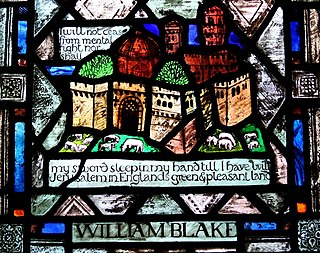
Caroline Charlotte Townshend (1878–1944) was a British stained glass artist of the Arts and Crafts Movement. She trained at Slade School of Fine Art and Central School of Arts and Crafts before becoming a pupil of Christopher Whall. She designed and made many stained glass windows, particularly for churches and cathedrals and set up the stained glass firm of Townshend and Howson in 1920 with her student and apprentice, Joan Howson. They used a dual signature for their completed works.
The Adelaide Easel Club was a society for South Australian painters which broke away from the South Australian Society of Arts in 1892 and which re-merged with the parent organization in 1901.

[[File:St Peter's Ealing Lady Chapel.jpg|thumb|St Peter's Ealing's Lady Chapel, with wall paintings by Henry Charles Brewer
The 2015 Queen's Birthday Honours are appointments by some of the 16 Commonwealth realms of Queen Elizabeth II to various orders and honours to reward and highlight good works by citizens of those countries. The Birthday Honours are awarded as part of the Queen's Official Birthday celebrations during the month of June. The Queen's Birthday Honours were announced on 1 June 2015 in New Zealand, on 8 June in Australia, and on 12 June in the United Kingdom, in Grenada, Papua New Guinea, Solomon Islands, Tuvalu, Saint Lucia and Belize.

Adelaide Lawson was an American artist known for her modernist oil paintings of landscapes and figures. She was said to possess an ability to build surface harmony through the use of flat, shadowless forms of generalized color and to use distortion and silhouetted patterning so as to give observers a sense of animation and often amusement.

Madeline Emily Green (1884–1947) was a British figurative artist, who exhibited at the Royal Academy, the Society of Women Artists, the Society of Graphic Art and at many other locations in Great Britain, and abroad.
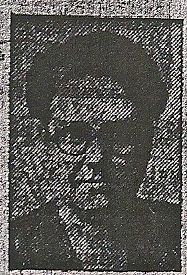
Margaret Isabel Dovaston was a British artist who became particularly well known for her oil paintings of historical interior English genre scenes, often depicting groups of figures in eighteenth century dress. She spent her whole working life in the Ealing and Acton area of west London.
The Willson Group of artists was an English Quaker family of about seven landscape, portrait and caricature painters. Members included John Joseph Willson, his sister Hannah Willson, his wife Emilie Dorothy Hilliard, and their four children, Michael Anthony Hilliard Willson, twins Margaret Willson and E. Dorothy Willson, and Mary Hilliard Willson.

Edward Arthur Fellowes Prynne (1854–1921) was a leading British late Pre-Raphaelite painter of portraits and subject pictures, who in later life became one of the country's best known creators of decorative art for churches.
